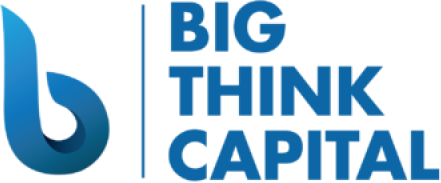Surviving Market Volatility: How Small Businesses Can Leverage Working Capital Advances and Business Lines of Credit in the Face of Inflation
Estimated Reading Time: 5 minutes
- Understand inflation’s impact on operating costs and consumer behavior.
- Utilize working capital advances and business lines of credit for cash flow management.
- Regularly evaluate cash flow to proactively address financial challenges.
- Implement cost reduction strategies to enhance financial stability.
- Consult financial advisors for tailored financing solutions.
Table of Contents
- Understanding Inflation and Its Impact on Small Businesses
- The Role of Working Capital Advances and Business Lines of Credit
- How to Manage Small Business Finances during Inflation
- Case Studies: Successful Cash Flow Management
- Practical Takeaways for Business Owners
- Conclusion
- FAQ
Understanding Inflation and Its Impact on Small Businesses
Inflation, defined as the rate at which prices for goods and services rise, can significantly impact small businesses in various ways:
- Increased Costs: As the cost of raw materials and supplies rises, businesses must either absorb these costs or pass them on to consumers, which can lead to reduced sales.
- Tighter Margins: Higher operational costs can squeeze profit margins, making it essential for businesses to manage their finances tightly.
- Decreased Consumer Spending: If consumers feel the pinch from rising prices, they may cut back on discretionary spending, directly affecting small business revenues.
To thrive in this environment, small business owners must adapt their financial strategies.
The Role of Working Capital Advances and Business Lines of Credit
Working capital advances and business lines of credit are two financial products that can be instrumental in navigating economic uncertainty.
Working Capital Advances
Working capital advances provide immediate cash that businesses can use for a variety of short-term needs. The key characteristics of these advances include:
- Quick Access to Funds: Funds can often be accessed much faster than traditional loans.
- Flexible Use: Businesses can use the advance for inventory purchases, payroll, or other operational expenses.
- Repayment Flexibility: Payments are typically taken as a percentage of daily credit card sales, making it easier to manage cash flow.
In an inflationary environment, working capital advances allow businesses to respond swiftly to changing market conditions, making necessary purchases without crippling their cash flow.
Business Lines of Credit
A business line of credit is another valuable tool that offers flexibility to small business owners. Here’s why it can be beneficial:
- On-Demand Funding: Business owners can draw funds as needed up to a specified limit. This is particularly advantageous for managing seasonal downturns or emergencies.
- Interest Only on Withdrawn Amounts: Unlike traditional loans where interest is charged on the entire loan amount, business lines of credit incur interest only on the amount used.
- Building Business Credit: Responsible use of a line of credit can help improve a business’s credit score, potentially leading to better financing options in the future.
How to Manage Small Business Finances during Inflation
To effectively navigate inflationary pressures, small business owners should consider implementing the following strategies:
1. Evaluate Cash Flow Regularly
Consistent and accurate cash flow assessments are crucial. Business owners should:
- Track all income and expenses diligently.
- Use financial software to automate tracking and forecasting.
- Regularly assess cash flow projections against current economic conditions.
2. Cut Non-Essential Expenses
Identifying and reducing non-essential expenses can free up cash flow. Consider:
- Canceling subscriptions or services that are not directly contributing to revenue.
- Negotiating contracts with suppliers to secure better rates during inflationary periods.
- Implementing cost-saving measures like energy efficiency improvements or renegotiating leases.
3. Leverage Financing Options Wisely
Utilizing financing products can provide businesses with the necessary liquidity to weather inflation. Here are steps to optimize financing:
- Improve Credit Scores: A higher credit score can lead to lower interest rates. Business owners should pay bills on time, reduce outstanding debt, and avoid new credit inquiries before applying for financing.
- Align Funding with Financial Needs: Determine whether a working capital advance or a line of credit better suits your needs based on cash flow patterns, sales cycles, and upcoming expenses.
- Consult Financial Advisors: Engaging with a financial expert can help identify the best financing strategy tailored to your unique business needs.
Case Studies: Successful Cash Flow Management
To illustrate these strategies in action, let’s consider two examples of small businesses that effectively navigated the challenges posed by inflation.
Case Study 1: Local Bakery
A local bakery faced rising prices for ingredients and a drop in consumer spending due to inflation. The owner utilized a working capital advance to purchase supplies ahead of a seasonal spike in demand. By bulk purchasing ingredients, the bakery not only managed to keep costs low but also offered discounts that attracted more customers during challenging economic times.
Case Study 2: E-commerce Business
An e-commerce retailer experienced fluctuating sales and increased shipping costs. To ensure they could maintain inventory levels without depleting cash reserves, they secured a business line of credit. The line of credit allowed them to purchase additional stock during promotional periods, keeping operations smooth while managing cash flow more effectively.
Practical Takeaways for Business Owners
As you explore financing options during inflationary periods, consider these three practical takeaways:
- Be Proactive: Actively assess your financial situation and prepare strategies before cash flow issues arise.
- Utilize Flexible Financing: Consider working capital advances or lines of credit to maintain liquidity and respond effectively to market changes.
- Focus on Financial Health: Regularly monitor your credit score and take steps to improve it, maximizing your financing potential.
Conclusion
In a volatile economic environment marked by rising inflation, small business owners must employ strategic financial management to survive and thrive. Working capital advances and business lines of credit are essential tools that can provide the necessary funding and flexibility to navigate these challenging times.
At Big Think Capital, we understand the unique challenges that small businesses face and are dedicated to helping you secure the funding you need to grow. Whether you’re looking to stabilize cash flow, invest in growth opportunities, or manage operational costs, our financial experts are here to guide you.
To learn more about how we can assist you in accessing the necessary financing solutions for your business, visit us at bigthinkcapital.com or speak with one of our knowledgeable funding experts today. Take control of your financial future and prosper despite market challenges.
FAQ
What is a working capital advance?
A working capital advance provides immediate cash that can be used for various short-term business needs.
How can I improve my credit score for better financing options?
Pay bills on time, reduce outstanding debts, and limit new credit inquiries to improve your credit score.
What are the benefits of a business line of credit?
A business line of credit offers on-demand funding with interest charged only on withdrawn amounts, providing financial flexibility.






